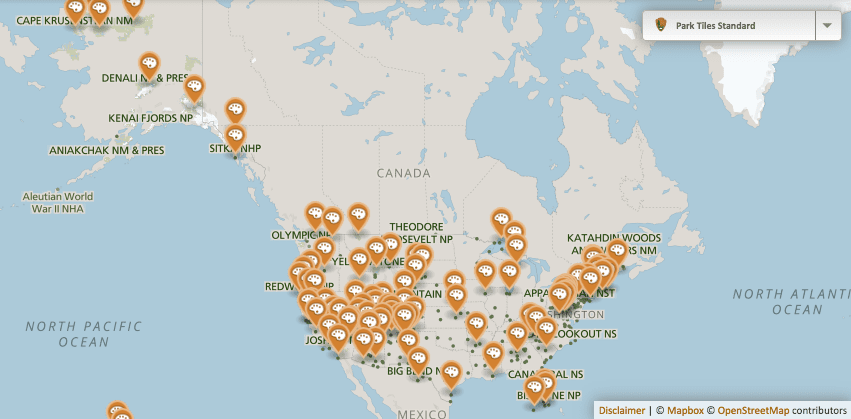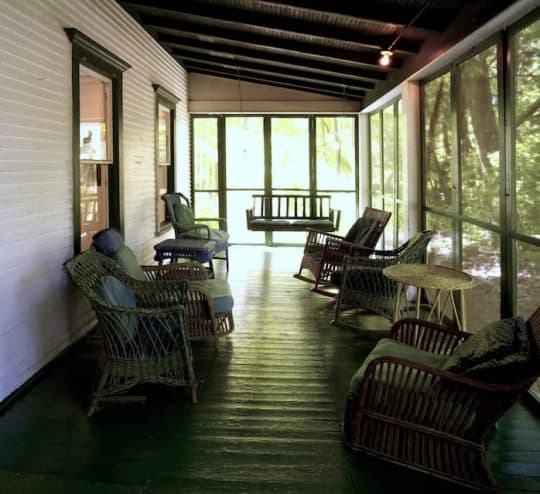(Updated) There’s nothing like an artist in residence (or artist residency) to focus on your art for an intense period of time. Artist residencies are application-based opportunities that take you away from your daily grind and obligations for several weeks to six months or more, providing a supportive environment for reflection, creative discovery, exposure, and mentorship. They can also help get you out of your comfort zone by helping you learn a new art form, connect with a community of artists, or switch up your normal routine to experience a welcomed change.
Goals of Artist in Residence Programs
Many residencies are located in places that provide beautiful scenery and extensive support to inspire participants. While the main goal of a program is to create new work, it’s also an excellent opportunity to forge new relationships with peers and visiting artists. Oftentimes, you’ll be invited to attend social events with other artists and guests, share your work for constructive feedback, or be part of an artist’s panel open to the public. No matter where you’re at in your career or artistic development, a residency can provide artists just starting out with teaching positions and work-study opportunities, catapult an emerging artists into the next stage of their career and offer seclusion for a busy established artist to create a new body of work.
The cost of attending an artist-in-residence program varies greatly. Some programs fully cover the cost of attending (including lodging and meals). Many will have some scholarship or financial aid. The extent of the funding and what is expected from the artist in return varies. Make sure you research what costs are covered and what are not, like supplies and transportation.
Of course, not all artists in residence programs are created equal. Some focus on a particular medium like fine art, performing, or literary arts, while others may focus on a certain demographic, like emerging, well-established artists or artists of color. Residency programs can be highly competitive due to their allure, but there are some with fairly high acceptance rates. Because applying for and participating in residencies are important to further your career, you may find yourself swamped by all the available choices.
There are scores of wonderful programs to choose from. To help you along, we’ve rounded out our top picks.
1. AiR program by Artrepreneur, Virtual
Artrepreneur’s Artist in Residence (AiR) program is an innovative opportunity open exclusively to the platform’s Pro members. The prestigious award empowers artists to create a new body of work — all from the comfort of their home or studio. Participants in the virtual AiR program will also receive all of the mentorship, guidance, and networking that an in-person residency offers: Each artist will be paired with a mentor from Artrepreneur’s team of seasoned curators, who will provide guidance and feedback via virtual studio visits over the course of the multi-week session. The provided stipend can be used for new materials, space or anything the artist could need to experiment and launch the next professional phase of their career. The result? A complete body of new work that will be featured in Artrepreneur’s Studio Collection as well as on social media channels with a wide reach and may be included in presentations for Artrepreneur’s commercial client list, guaranteeing unparalleled exposure and potential connections.
2. MacDowell, New Hampshire
The MacDowell residency is one of the nation’s most competitive and prestigious programs. Lasting anywhere from a month to six weeks, this residency takes place in an idyllic rural setting. As the first artist’s colony established in the United States, MacDowell offers cozy cabin studios spread across its acreage and has spurred many careers. The writers, visual artists, composers, filmmakers, playwrights, and architects who have attended MacDowell have gone on to win accolades including Academy, Grammy and Tony Awards, Pulitzer Prizes and more. About 300 artists in seven disciplines are awarded fellowships each year.
To ensure conditions are conducive to the creative process, there is absolutely no phone or internet access, so there’s nothing to distract you from producing your best creative work. Artists are also encouraged to collaborate with each other, and a free lunch is offered daily. Applications for the fall, spring, and summer are filled on a rolling basis, and applications should include work samples and references.
3. National Park Service Residencies, various locations throughout the United States

Artist in Residence programs across the National Park System.
The United States National Park Service offers more than 50 artist-in-residence programs throughout the country. Often lasting between two and four weeks, the Arts in the Parks program offer a wonderful opportunity for inspiration in stunning, serene locations from Alaska to Iowa to Connecticut — and your resulting work will be displayed in a place that thousands of travelers visit every year.
The application process varies from park to park, so you’ll have to review each option once you settle on a location. Visual artist Jym Davis said of his experience, “Artists are seeking the same things that most park visitors want. We want to step outside of our little bubble and experience something transformative. Artists translate that awe-inspired feeling into creative expression, and hopefully, that work has some value for the greater public.”
4. Studio Museum in Harlem, New York
The Studio Museum in Harlem Artist in Residence program is reserved exclusively for artists who are of African or Afro-Latinx descent. The eleven-month-long residency begins in the fall and is only offered to three artists each year, making it a highly coveted residency; renowned alums include Kehinde Wiley, Mickalene Thomas, David Hammons, and Sandford Biggers. Participants receive a $37,500 stipend to create work over the course of the program and are required to spend a minimum of 20 hours per week in the studio. Once the residency is completed, their work will be presented in the museum in a culminating exhibition. Applications open in April, and it’s important to note that artists are required to spend a minimum of 20 hours per week in the studio.
5. Skowhegan School of Painting and Sculpture, Maine
The Skowhegan School of Painting and Sculpture offers one of the most prominent artist-in-residence programs in the country. Held on 350 acres in rural Maine, the nine-week summer residency program is highly competitive, reserved for emerging artists, and only allows participants to attend once in their lifetime. Founded in 1946, The Skowhegan School offers participating artists the chance to be critiqued and tutored by highly accomplished established artists, often outside of studio hours, along with lectures and programs by an array of other visiting artists. The result, the program says, is a transformative once-in-a-lifetime experience. While tuition to Skowhegan is $6,000, the program has been known to offer full and partial scholarships to artists in need who qualify for the program.

Residencies like Oxbow are fully funded so that artists can focus solely on their work.
6. Ox-Bow Residency, Michigan
Affiliated with The School of Art Institute in Chicago, Ox-Bow features a variety of residencies on 115 acres of Michigan countryside throughout the year for artists and writers at various stages in their careers. Whatever the program, artists in residence join the idyllic campus environment that has served as a haven for creatives for more than a century. Along with a summer residency and a winter virtual program, Ox-Bow debuted a new Longform hybrid residency-workshop in 2021, and a Halloween residency called “Residence Evil,” where artists, or “creeps-in-residence,” produce at least one of many beautiful and bizarre scenes for Ox-Bow’s Halloween weekend event Ox-Bow Goes to Hell.
The fall program tends to be its most coveted, however: Admitting up to 30 artists, Ox-Bow Artists in Residence can elect either a two-, three- or six-week residency and have studio access not available to their summer counterparts. The program is entirely funded for participating artists and includes room and board, three daily meals, and various opportunities to share your work with other artists in the program.
7. Whitney Museum of American Art Independent Study Program, New York City
It shouldn’t be a surprise that the country’s most selective artist residency program is part of one of New York’s most iconic art institutions. Whitney’s Independent Study Program offers individual programs in studio art, curatorial studies, and critical studies, for which just 15 artists are selected each year. What’s great about the Whitney program is that it provides a framework of study for emerging curators and art critics as well as artists. What are the benefits of this program? Renowned guest artists provide talks and critique your work and develop an amazing network, and your work is featured in their annual show.
8. American Academy in Rome Fellowship, Rome, Italy
With free room and board for up to two years in one of the most magical cities in the world, it’s no wonder artists clamor to attend the American Academy in Rome’s Artist in Residence program. Frequented by artists like painter and sculptor Ana Mendieta and visual artist Sarah Oppenheimer, the Rome Prize fellowship is not exactly easy to get into. Nine juries convene to deliberate entries from January through March, and finalists are expected to come to the Academy office in New York for interviews. The winners are approved by the Academy’s Board of Trustees and announced in mid-April.
9. Recology
This Bay Area residency is a bit unusual compared to most, as it requires artists to literally work with garbage. The Recology residency in San Francisco sets artists up with studio space near the San Francisco Solid Waste Transfer and Recycling Center. The goal is to inspire participating artists to conserve natural resources and make something beautiful out of discarded materials. After the residency, artists participate in a two-day exhibition and contribute a work to its permanent collection. Six residences are awarded per year, and artists must first attend an on-site tour before submitting their application to an advisory board of arts professionals, environmentalists, ecologists, and program alums.
Have you participated in an artist in residence program? What advice do you have for artists looking to participate in one? We want to hear about it in the comments!
